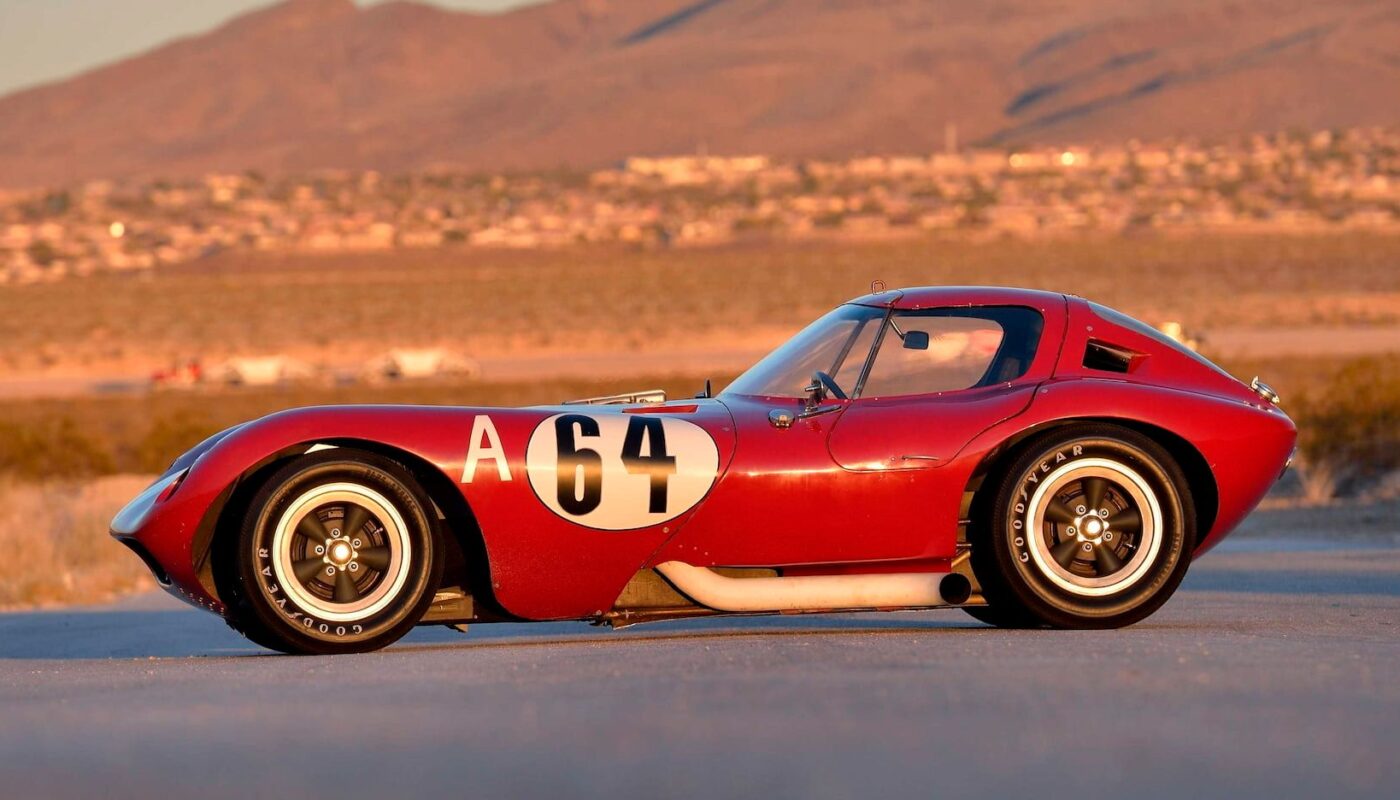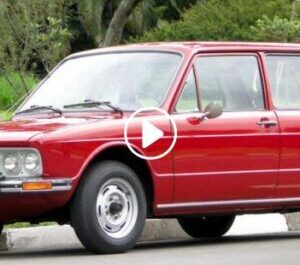Secretly funded by Chevrolet and capable of 215mph, the Cheetah was destined to become a certified Cobra-killer. In an alternate universe, this car would’ve likely shifted global racing attention from the blue oval to the bow tie, had it not been met with such a premature demise.
Following GM’s infamous ban on racing in 1963, dedicated employees within the corporation had still aimed their sights on victory at the racetrack… even if it meant disobeying the direct orders of the top brass. Their clandestine efforts, combined with the talented Bill Thomas, had ultimately led to the development of the Cheetah; a stripped-down, V8-powered racer with enough grunt to take on the world of GT racing.
Thomas, in conjunction with fabricator Don Edmunds, had generated one of the absolute fastest cars that the world had ever seen, with a bit of discreet help from General Motors. Sadly, the Cheetah would never get to properly stretch its legs.
Why GM Funded The Bill Thomas Cheetah Instead Of The Corvette
The story of the Cheetah can be traced back to 1957, then the AMA (Automobile Manufacturers Association) had effectively placed a ban on funding any form of motor racing. This decision was a gentleman’s agreement that was largely influenced by the 1955 Le Mans Disaster, as well as the inherent danger of the sport. It was thought that American automakers had wished to distance themselves from this image, however, it wouldn’t take long for members of the Big Three to return to motorsport.
Still, they’d done it so discretely, creating high-powered engines and directly sponsoring smaller, independent teams. After a few years, most American car manufacturers had since backed out of the AMA arrangement. Their actions were heavily criticized by Roy Abernathy of American Motors Corporation. AMC had played by the rules and stayed out of racing. In January 1963, Abernathy had laid out a damning speech on his competitor’s activities to Detroit’s Adcraft Club, a local organization that handled a strong portion of automotive advertising and marketing within the city. Within hours, GM’s executives were already re-evaluating their stance on motorsport involvement. To further fan the flames, GM was already in the throes of a federal antitrust investigation and saw no interest in attracting further negative press. The decision was once again made to ban the company’s involvement in any form of racing.
At this same point in time, Zora Arkus-Duntov, the father of the Corvette, had already been working on a series of specialized prototypes, built strictly for racing. Known internally as “Project Lightweight,” but would eventually become the original Corvette Grand Sport, these cars weighed roughly 1,000 lbs less than the production Corvette and were designed to conquer the Ford-sponsored Shelby Cobra. Duntov had initially planned a run of over 100 units to comply with the FIA’s homologation rules. Unfortunately, when GM’s executives had discovered what Duntov and his team had been creating, they’d immediately cut off funding after only five Grand Sports were ever built. With Ford sponsoring Shelby American and their dominating Cobras, GM was now out of the game entirely, seemingly forced to sit on the bench.
The Bill Thomas Cheetah Was Much Faster Than You’d Think
Enter Bill Thomas. Originally an aircraft engineer, Thomas had shifted his focus to road racing during the 1950s, favoring Corvettes for their small-block V8s. Thomas had grown to be well known for his tuning abilities, specifically with the Rochester fuel-injection system introduced in 1957, and soon amassed a reputation within the Californian road-racing scene.
Later, in the early 1960s, it was on that same scene that Thomas witnessed the staggering threat posed by the Shelby Cobra. The lightweight, V8-powered roadsters were becoming extremely competitive, even against the likes of European giants like Ferrari and Maserati. Thomas later approached GM’s VP Ed Cole and expressed his desire to create a Chevrolet-powered competitor to Shelby American. At first, Thomas had thought that a rear-engined car utilizing Corvair components would be the solution.
Eventually, after talks with Cole, it was then agreed that the project would be front-engined and powered by Chevrolet’s 327ci V8. Chevrolet would directly sponsor Thomas with Corvette components, who would be tasked with engineering and branding the cars, in order to avoid detection and scrutiny from General Motors’ executives. The entire project was highly clandestine and made to be as discrete as possible. Additionally, Cole had instructed Thomas to build a minimum of 100 units, in order for the finished project to qualify as a production car under the FIA’s homologation rules.

Bill Thomas then set to work after recruiting Don Edmunds, a talented sprint car fabricator. The pair then began construction in Anaheim, California. Their car, which would become the Cheetah, was based upon a tubular chassis that pushed the engine as far back as possible for better balance, creating an FMR layout. Due to this, the Cheetah had no driveshaft. Instead, the transmission had been coupled directly to the rear differential via a U-joint. The initial two cars had been sculpted in aluminum bodywork, although fiberglass was used for later versions. Power came from Chevy’s 327ci V8, which had been enlarged to 377ci and fitted with Thomas’ modified fuel-injection. These engines were rated at approximately 513 hp, over 100 horses more than the Shelby Cobra. Furthermore, the Cheetah was incredibly light, hitting the scales at a mere 1,510 lbs.
Eventually, the idea had been proposed of Bill Thomas producing the Cheetah under official contract from GM, in order to cut down on production costs while still offering competition to the Ford-sponsored Shelby Cobra. A Cheetah was then sent out to GM’s Technical Center in Detroit, where the car achieved an insane 1.18G on the skidpad during evaluation. During further testing at Daytona International Speedway, driver Budd Clusserath achieved an outstanding speed of 215 mph, which was more than enough to offer serious intimidation down the long Mulsanne Straight at Le Mans.
What Really Ended The Bill Thomas Cheetah?
Although the project was going smoothly, the Cheetah wasn’t without its issues. Stifling cabin temperatures had been plaguing drivers, as the engine’s headers ran directly underneath the passenger compartment. Handling problems had also been a serious factor, since the initial tubular frame was having trouble keeping the massive horsepower in check.
Even so, what ultimately killed the Cheetah was a fiery inferno that erupted at Thomas’ workshop in September 1965. All the tooling and machinery had been destroyed, which would’ve cost Thomas a fortune to replace. To make things worse, the world of sports car racing had been evolving at a remarkable pace. Although the Cheetah was originally built to conquer the Shelby Cobra, cars like the Ford GT40 were now posing an even bigger threat.
Bill Thomas was never able to produce the FIA’s required 100 units before the destruction of his small factory, and so, the car never qualified for official WSC competition. Exact production figures are unknown, although it’s speculated that between 11 and 27 Cheetahs were ever built



